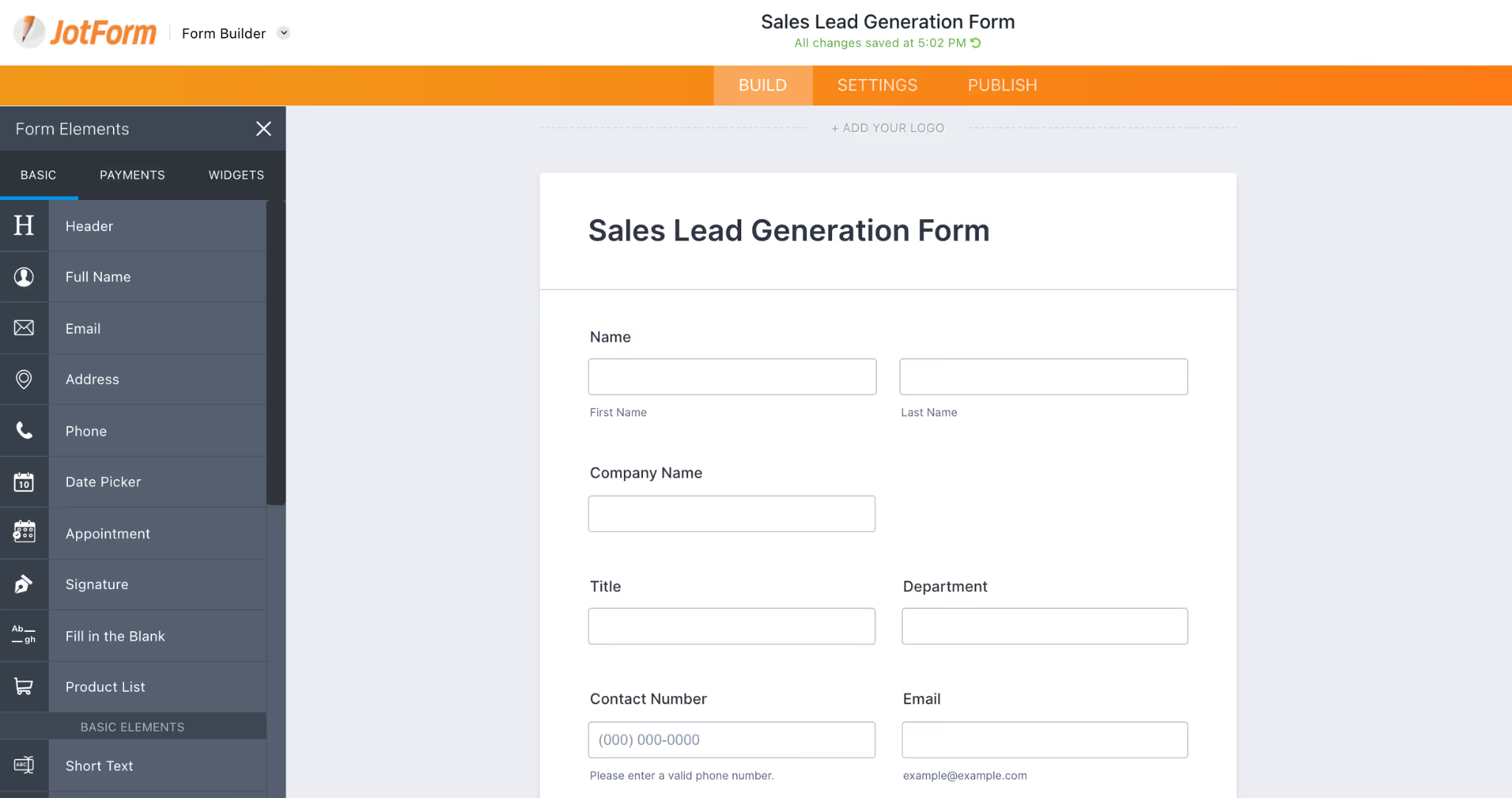How to Utilize Online Forms to Improve Your Lead Generation Process
How to Utilize Online Forms to Improve Your Lead Generation Process

Lead generation is a topic that has been covered extensively. At this point, almost every company is aware of its importance. We’ll assume that you’re already an expert in lead generation through the article. However, if by any chance you have no idea, you can use this as a guide about lead generation.
When people talk about lead responsiveness, they usually only think about how “well” they respond to leads. But that’s only half of the story. It turns out that the more important aspect of lead responsiveness is how “quickly” you respond.
A study conducted by the Harvard Business Review states that many companies are way too slow to respond to leads. The study puts the average response time to new leads at around 42 hours, which is extremely slow. When you stop to think about it, it’s pretty simple. You’re competing with all of your competitors to convert that one lead and more often than not, the early bird catches the worm.
At this point you might be thinking; “My response times are way higher than the average 42 hours. We always contact our leads on the same day that they reach out to us.” Or you might even prioritize important leads within the first hour. If that’s the case, you’re doing pretty well, right? Well, not quite and we’ll tell you why.
According to the same study, contacting a lead within the first hour increases your likelihood of converting them 60 times more compared to contacting them in the first 24 hours. Even better, contacting leads within the first 5 minutes increases that likelihood by more than 37 times.
This is primarily because almost 50% of leads choose the business that contacts them first. So, if you reach out to a new lead within minutes, you’re already further along in the customer’s journey than your competitors.
Reasons why lead responsiveness is so slow
There are many reasons why your lead responsiveness might be subpar. Let’s have a look at the biggest reasons without steering too far away from the main topic.
1. Priorities
Most businesses value how they respond to leads and they usually have the belief that no matter how late you respond to them, if you have a good funnel and a good product, you’re doing your best to convert those leads.
While first impressions are extremely important, responding quickly to leads is also a key part of that first impression.
No matter what your industry is, competition over new leads is fierce. Frankly, it all boils down to being the fastest. For example, let's assume that you're searching for a solution. You narrow down all of your options to two great products. After filling in the lead contact form, one of them immediately responds, while the other calls you a couple of hours later. You're most likely to pick the one that called you first. So, by responding to leads quicker the first company took the initiative into their hands. The company that was slower to respond will be left waiting for the next potential new client to complete their form.
2. Poorly optimized lead generation processes
Most companies don’t have an automated or up-to-date lead generation process. Usually, when leads are qualified, a sales development representative manually qualifies them, and adds them to a queue so that they can be responded to, in order.
While having an automated system is good, it should not be regarded as a silver bullet. If you rely too much on an automation system, you could neglect to supervise the entire process which could eventually result in communication problems with leads.
The best way to handle this process is to strike a fine balance between automation and human input. Educating sales representatives, using the right tool for your business, and being able to track the whole process are some of the most fundamental steps you can take.
3. Untrained or poorly managed team members
This is a lot harder to fix compared to the other challenges listed above. There can be a lot of issues when different team members qualify leads and reach out to them. Effective communication is the key to figuring out how to qualify leads and reach out to them in a timely manner. This will also ensure they get qualified as quickly as possible.
Improving lead responsiveness with online forms
When we think about online forms, we usually only think about contact and registration forms and it ends there. In truth, tools like JotForm offer a lot of functionality that builds on top of traditional form features.

For example, you can build a lead contact form that will automatically populate within your CRM whenever it is filled out. Then, you can set up your CRM to automatically reach out to those leads. If you have specific landing pages in place to qualify leads more efficiently, you can skip the CRM step and the lead can directly book a call through the contact form.
If you want to take it to the next level, you can set up an approval flow that will allow you to qualify leads and reach out to them in a single step. In that case, you can drastically increase your lead responsiveness rate by asking specific questions to the lead and asking them if they want to be contacted. Once the form is filled, the responses will appear in the approval flow with the necessary information so your sales development team can review the results and can choose to automatically reach out to them or ignore the lead.
You can learn more about how online forms can help your lead generation process without breaking the bank.
Take the faster path to growth. Get Smith.ai today.
Key Areas to Explore
Technical Implementation Terms
Voice user interface (VUl) design
Speech recognition integration
Text-to-speech optimization
API connectivity and webhooks
Real-time data synchronization

Your submission has been received!














.svg)



